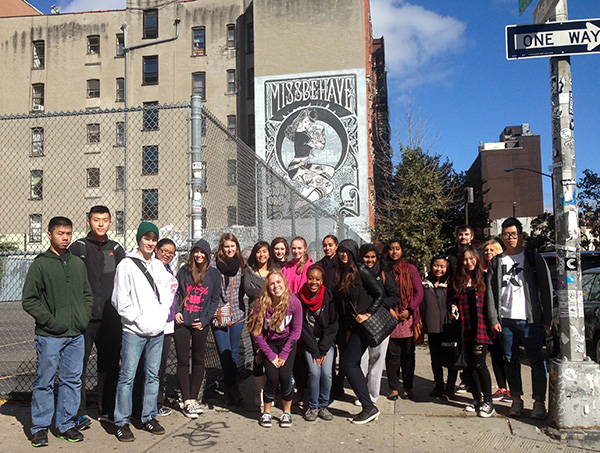What Makes Graff Tours Different – Part 1: The Downtown Manhattan Tour
One of the greatest things about New York City is its dynamic landscape. Each borough has its own distinct history. Cultural, social, and economic demographics change from one neighborhood to the next. The city is in constant flux – an ever-changing present looks at the past to open doors for the future. All of this is reflected in the urban environment right down to the art on the streets.
Our mission at Graff Tours is summed up in three parts: Learn the history; Appreciate the art; Be inspired. We set out to educate guests about the unique story behind NYC’s graffiti and street art and how it relates to the international scene today. To achieve this, tours focus on 3 specific areas: Downtown Manhattan; Williamsburg; and Bushwick.
The Downtown Manhattan Tour
In his book “The New Yorkers,” street photographer Robert Herman describes downtown Manhattan during the 1970s and 1980s:
At that time, these neighborhoods were a mixture of three distinct groups: the people who had lived and worked there for many years and had their ethnic background in common; the artists who came in search of affordable living and studio space; and finally the more well to-do who instigated the process of gentrification with the seemingly inevitable exile of the original inhabitants. It was a time when graffiti was an integral part of the landscape, and the clash of cultures created a cacophony of voices…
In time, the grit of Herman’s downtown fell to its posh invaders. Rent skyrocketed as boutiques, trendy restaurants, fancy coffee shops and artisanal cocktail bars began to appear. Yet, peppered through out these glossy grounds are tags, wheatpastes, stickers, and the occasional mural or piece. See, there’s a history and spirit that still pulsates in downtown Manhattan, making it an extraordinary place to explore and discover. Today’s graffiti and street art scene is just as viable as it was during the 70s and 80s. But the game has changed in many respects, to suit a new generation of players and spectators.
One of the tour highlights is the mural at Ideal Glass, a New York-based art collective. As far back as 2008, Ideal Glass has used its outside wall as a space for artists to create engaging public art works. New York City is zero-tolerance when it comes to unsanctioned public art. So for artists, many with a street background, to have a place like Ideal Glass where they can work freely without worrying about getting in trouble is very cool. Experienced outside the often intimidating, white cube gallery or museum, art reaches a broader and more diverse audience. Tel Aviv-based street artist Know Hope, South African artist Faith47, LNY, and Mr. Brainwash have all exhibited at Ideal Glass.
A few stops later on the tour and we’re at Centre-fuge Public Art Project. Founded in February 2012, Centre-fuge is the brainchild of John Neville and Pebbles Russel, downtown artists who saw an opportunity to turn an unsightly construction trailer into a thing of beauty and inspiration. Permission was granted to use the trailer’s exterior as space for artists to create. Motivated by the memory of their friend, neighbor and fellow artist Mike Hamm who passed away in January 2012, Pebbles and John conceived of Centre-fuge as a site for artistic exchange and community building. The outdoor gallery presents a new cycle of artists every two months and has become a major site to check out some of the freshest and most exciting public art in New York City. Claw Money, Cake, Mr. Prvrt, Damien Mitchell, and Lexi Bella are just some of the artists who have exhibited here.
A couple-of-blocks walk brings us to heart of the Lower East Side, and home of a colossal mural designed by maverick artist Mike Giant. A cross-media talent renowned for his graffiti style, tattoo work, and successful clothing company Rebel 8, Mike Giant conceived of the mural for the Missbehave boutique, the first shop to sell his clothing line. He signed the piece under the alias “Giant One,” rendered in classic bubble style letters. Though Missbehave closed years ago, the mural had become such a fixture of the downtown scene, it was permitted to stay. Giant’s tattooed pin-up continues to gaze down over the neighborhood.

In sum, history and artistic legacy play a big role in downtown Manhattan’s street art scene. Inspired by the graffiti blanketing the streets of his downtown stomping grounds, Keith Haring started his now famous subway chalk drawings series. Haring’s main objective was to make art accessible to everyone. And accessibility and community are also major undercurrents driving Ideal Glass and Centre-fuge. All the while, the street culture that Haring looked to, the one more focused on tags and throw ups is easily spotted on this tour.
